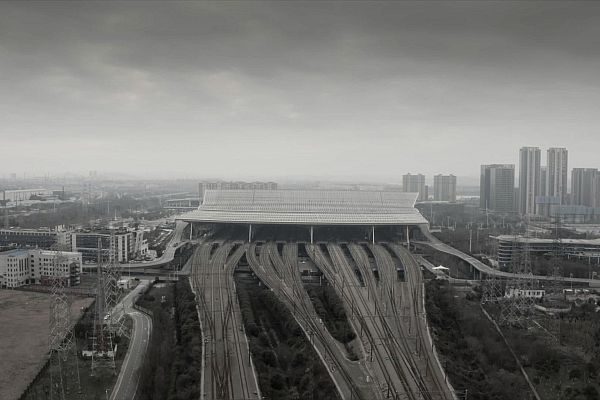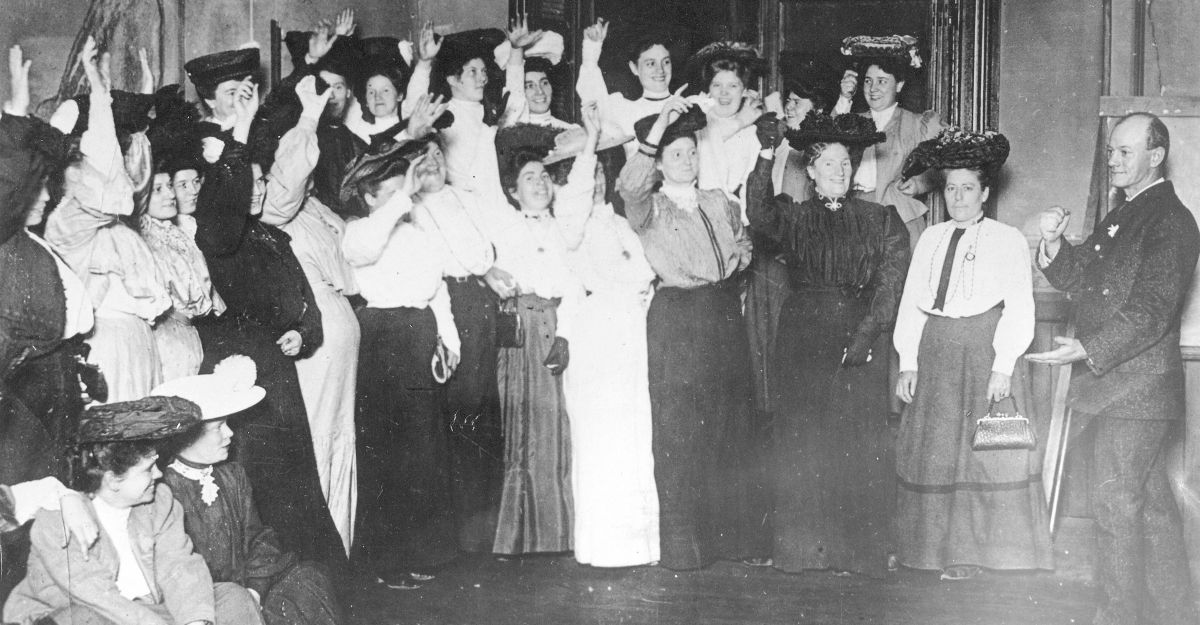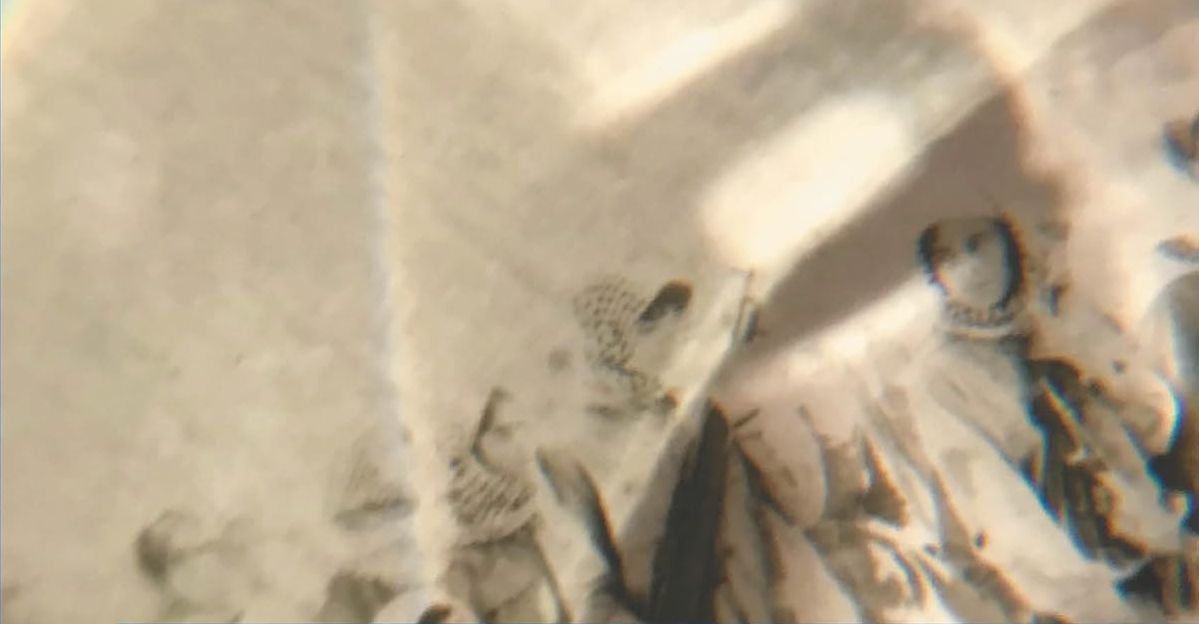Ai Weiwei’s new documentary Coronation opens with an aerial shot of Wuhan station, its trains grounded, the typically chaotic surrounds deserted. Rising electronic beats puncture the sound of static, heightening the sense that it’s not quite real, that we’re in some kind of techno-surrealist glimpse of the future. Everything looks shiny and efficient, cold and impersonal. The film is bookended with a scene of a man burning paper money, a traditional folk religious practice venerating the dead. Overlaid with traditional Chinese music, it’s a ritual that would be recognisable to someone living during the imperial era.
This is the tension at the heart of the modern Chinese experiment: never before has a society changed so dramatically so fast, the pull of the future dragging along six thousand years of history that is still – in often strange and unexpected ways – woven into the fabric of everyday life. This ancient versus modern dichotomy can feel like a tired trope, especially in the hands of pop-sinologists trying to uncover the ever-elusive Real China. But the documentary is masterful and, where his art can sometimes feel superficial, Coronation is nuanced, challenging and visually spectacular.
Initially, Ai Weiwei set out to make a film that reflected what ordinary Chinese people went through as a result of the coronovarus and, while Coronation does that, its release mid-pandemic means that it’s not just a story about China.
The documentary begins on the 23rd of January with a couple returning home to Wuhan, a city already in crisis. By its end, on the 8th April, there is a sense of victory, that the plight is over and the danger has passed: the temporary hospitals are dismantled, the medical staff who’d come from other provinces return home and there are celebrations. If that was it – if the virus had been contained to Wuhan or even China – the focus of western audiences would probably be fixed on the draconian lockdown and apparent state overreach. Instead, it’s impossible not to compare China’s response with the measures adopted in the rest of the world. Ai resists the temptation to make this explicit, yet the film can’t be separated from the broader discourse, which is increasingly framed by misleading binaries: not just between ancient and modern but also between east and west, authoritarianism or democracy – between individual/collective freedom and positive/negative liberty.
*
The lockdown in Wuhan (and China, more generally) was far more severe and heavily policed than anything western governments have attempted. Even if they wanted to and were legally permitted to replicate China’s approach, none would have the resources to enforce measures on the same scale. The full extent of the human toll will likely never be fully known, but images of people being dragged from their homes and reports of apartments being welded shut suggest that it was not insignificant.
The film tells the story of a volunteer construction worker from Henan province who came to beleaguered city to help build the temporary hospital and is then unable to leave. Forced to live in his car while he tries to navigate the labyrinthine Chinese bureaucracy to obtain the required travel permits, he’s treated as expendable by the faceless officials on the end of the line. Having served his purpose, he’s left to fend for himself.
There is a crude utilitarian logic at play: no one is allowed to leave Wuhan and risk spreading the virus; one man’s suffering is the price that has to be paid to keep the rest of the country safe. While this is only stated in the press kit and not revealed in the film, the worker committed suicide shortly after returning home.
This, as western pundits are wont to say, is the cost of living under an authoritarian regime, which is true enough. But China hardly has a monopoly on state-sanction inhumanity. Australia’s border restrictions have also caused enormous heartache for many families, with many still trapped overseas, while others can’t even cross state borders to be with sick and dying loved ones.
That’s not to suggest some false equivalence – China is not Australia and the insinuation that Victoria’s lockdowns are tantamount to a totalitarian takeover are historically illiterate and spurious; nonetheless, as Max Weber’s definition of state as the human community that (successfully) claims the monopoly of the legitimate use of physical force within a given territory’ attests to, there is an authoritarian pulse at the heart of all state power.
Now living in exile, Ai has experienced the arbitrary power of the Chinese state first-hand and has spent much of his career criticising the Communist Party’s callousness towards those it governs. This authority is ever-present: sometimes in visible, concrete ways, but always lurking as a threat. Towards the end of the film, when family members come to collect the ashes of loved ones who’ve died of coronavirus, party officials can be seen in the background, ensuring that order is maintained and that any displays of grief, anger or frustration don’t become public spectacles. One man wanting to be alone as he collects his father’s ashes, instead of being accompanied by local party officials he doesn’t know, has his request denied and is bounced around in an endless bureaucratic merry-go-round.
These tales of personal tragedy and suffering are told alongside the story of the pandemic, where the same party infrastructure is one of the main reasons China – after the initial attempts to cover up the crisis– has been so successful in eradicating community transmission. The mobilisation of resources to deal with the outbreak is on a scale that no other country could come close to replicating. Under Xi Jinping, the Communist Party’s structures have been strengthened, including the neighbourhood committees responsible for a lot of the community engagement work done throughout the country – going from door-to-door, passing on information, questioning residents and helping with contact tracing.
There was no self-isolating or self-quarantining: Wuhanese residents were simply not allowed to leave their apartments. Were these extreme measures, in hindsight, justified? Compare them with, say, the United States, which has lacked any central leadership, implemented a patchwork of local measures and restrictions and will, as a result, have a far higher death toll and much worse economic outcomes. What is the responsible way for a government to act? How should it balance individual rights with those of the community? These questions are not straightforward, nor are any good (in an absolute sense) outcomes, whatever path is followed.
Perhaps the starkest contrast, though, is in the footage from inside the intensive care unit of Wuhan Hospital: shot using hand-held cameras about the size of a smart phone, these scenes are strangely beautiful. ICUs can be surreal places. They cater to the sickest people, many on the verge of death, but a calm hangs over them, they shine with intense artificial light and surfaces kept religiously clean. They’re removed from the chaos usually associated with hospitals: over-crowded emergency rooms, ambulances ferrying people in and out, uncooperative patients. Those who are unfortunate to find themselves there are gravely ill, often unconscious, breathing with the help of the ventilators – a life-preserving metronome, its rhythms comforting, its sound the sound of the only remaining hope.
The Wuhan ICU looked like something out of the future, in large part because of the infection control measures. All medical staff were double gowned, double gloved, wearing double face masks and googles; ambulance drivers were hosed down with disinfectant spray and doctors were remotely guided through the careful process of removing contaminated PPE. It’s impossible not to compare these scenes with images of New York nurses being forced to wear the plastic ponchos they hand out at the baseball when it rains, or to reports that Victorian healthcare workers are, even at this stage of the pandemic, complaining of ill-fitting N95 masks and PPE shortages.
*
The pandemic feels increasingly like a historic inflection point and Coronation may, over time, come to be seen as the first film of a new era. Conveyed through the lens of a dissident, its sense of destiny about China’s rise – a common theme in state propaganda – is a vision that offers no triumphalism or comfort.



